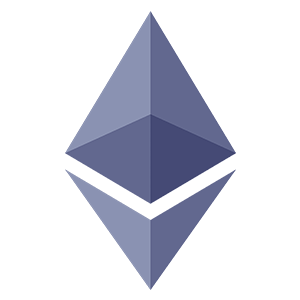 Ethereum (ETH) traded down 4.1% against the dollar during the 1 day period ending at 23:00 PM E.T. on August 11th. During the last seven days, Ethereum has traded up 9.9% against the dollar. Ethereum has a total market capitalization of $305.60 billion and $14.95 billion worth of Ethereum was traded on exchanges in the last 24 hours. One Ethereum coin can currently be purchased for $2,540.96 or 0.04336283 BTC on major cryptocurrency exchanges.
Ethereum (ETH) traded down 4.1% against the dollar during the 1 day period ending at 23:00 PM E.T. on August 11th. During the last seven days, Ethereum has traded up 9.9% against the dollar. Ethereum has a total market capitalization of $305.60 billion and $14.95 billion worth of Ethereum was traded on exchanges in the last 24 hours. One Ethereum coin can currently be purchased for $2,540.96 or 0.04336283 BTC on major cryptocurrency exchanges.
Here is how other cryptocurrencies have performed during the last 24 hours:
- Cardano (ADA) traded down 5.2% against the dollar and now trades at $0.33 or 0.00000564 BTC.
- Avalanche (AVAX) traded 5.5% lower against the dollar and now trades at $20.64 or 0.00035215 BTC.
- NEAR Protocol (NEAR) traded 7.1% lower against the dollar and now trades at $3.90 or 0.00006651 BTC.
- Uniswap (UNI) traded 5.1% lower against the dollar and now trades at $5.92 or 0.00010110 BTC.
- Internet Computer (ICP) traded 6.8% lower against the dollar and now trades at $6.93 or 0.00011831 BTC.
- Cronos (CRO) traded 5.8% lower against the dollar and now trades at $0.0876 or 0.00000149 BTC.
- Cosmos (ATOM) traded 3.3% lower against the dollar and now trades at $5.01 or 0.00008550 BTC.
- Hedera (HBAR) traded down 5.4% against the dollar and now trades at $0.0533 or 0.00000091 BTC.
- Algorand (ALGO) traded down 4.3% against the dollar and now trades at $0.12 or 0.00000199 BTC.
- Fetch.ai (FET) traded 10.1% lower against the dollar and now trades at $0.82 or 0.00001405 BTC.
Ethereum Profile
Ethereum (ETH) is a proof-of-stake (PoS) coin that uses the Ethash hashing algorithm. Its launch date was July 30th, 2015. Ethereum’s total supply is 120,270,278 coins. The official website for Ethereum is www.ethereum.org. Ethereum’s official message board is forum.ethereum.org. The Reddit community for Ethereum is https://reddit.com/r/ethereum and the currency’s Github account can be viewed here. Ethereum’s official Twitter account is @ethereum and its Facebook page is accessible here.
According to CryptoCompare, “Ethereum is a technology for building apps and organizations, holding assets, transacting and communicating without being controlled by a central authority. There is no need to hand over all your personal details to use Ethereum – you keep control of your own data and what is being shared. Ethereum has its own cryptocurrency, Ether, which is used to pay for certain activities on the Ethereum network.What is the difference between Ethereum and Bitcoin?Launched in 2015, Ethereum builds on Bitcoin's innovation, with some big differences.Both let you use digital money without payment providers or banks. But Ethereum is programmable, so you can also build and deploy decentralized applications on its network.Ethereum being programmable means that you can build apps that use the blockchain to store data or control what your app can do. This results in a general purpose blockchain that can be programmed to do anything. As there is no limit to what Ethereum can do, it allows for great innovation to happen on the Ethereum network.While Bitcoin is only a payment network, Ethereum is more like a marketplace of financial services, games, social networks and other apps that respect your privacy and cannot censor you.Why would I use Ethereum?If you’ve ever sent money overseas (or plan to), or had to worry about the future of your assets due to external forces outside of your control where you live, or been fed up by the numerous restrictions and fees imposed by traditional financial institutions for everyday transactions, you might be interested in what cryptocurrencies have to offer.Bear in mind that Ethereum is a story that is still being written, and many more reasons to use it are being uncovered as it evolves and develops over time.What's unique about ETH?There are many cryptocurrencies and lots of other tokens on Ethereum, but there are some things that only ETH can do.ETH fuels and secures EthereumETH is the lifeblood of Ethereum. When you send ETH or use an Ethereum application, you'll pay a fee in ETH to use the Ethereum network. This fee is an incentive for a block producer to process and verify what you're trying to do.Validators are like the record-keepers of Ethereum—they check and prove that no one is cheating. They are randomly selected to propose a block of transactions. Validators who do this work are also rewarded with small amounts of newly-issued ETH.The work validators do, and the capital they stake, keeps Ethereum secure and free of centralized control. ETH powers Ethereum.When you stake your ETH, you help secure Ethereum and earn rewards. In this system, the threat of losing ETH deters attackers. More on stakingETH underpins the Ethereum financial systemNot satisfied with payments, the Ethereum community is building a whole financial system that's peer-to-peer and accessible to everyone.You can use ETH as collateral to generate entirely different cryptocurrency tokens on Ethereum. Plus you can borrow, lend and earn interest on ETH and other ETH-backed tokens.Uses for ETH grow every dayBecause Ethereum is programmable, developers can shape ETH in countless ways.Back in 2015, all you could do was send ETH from one Ethereum account to another. Here are just some of things you can do today.Stream ETH – pay someone or receive funds in real time.Swap tokens – you can trade ETH with other tokens including Bitcoin.Earn interest – on ETH and other Ethereum-based tokens.Get stablecoins – access the world of cryptocurrencies with a steady, less-volatile value.Why does ETH have value?ETH's valuable in different ways to different people.For users of Ethereum, ETH is valuable because it lets you pay transaction fees.Others see it as a digital store of value because the creation of new ETH slows down over time.More recently, ETH has become valuable to users of financial apps on Ethereum. That's because you can use ETH as collateral for crypto loans, or as a payment system.Of course many also see it as an investment, similar to Bitcoin or other cryptocurrencies.What was The Merge?The Merge was the joining of the original execution layer of Ethereum (the Mainnet that has existed since genesis) with its new proof-of-stake consensus layer, the Beacon Chain. It eliminated the need for energy-intensive mining and instead enabled the the network to be secured using staked ETH. It was a truly exciting step in realizing the Ethereum vision—more scalability, security, and sustainability.Initially, the Beacon Chain shipped separately from Mainnet. Ethereum Mainnet – with all it's accounts, balances, smart contracts, and blockchain state – continued to be secured by proof-of-work, even while the Beacon Chain ran in parallel using proof-of-stake. The Merge was when these two systems finally came together, and proof-of-work was permanently replaced by proof-of-stake.Imagine Ethereum is a spaceship that launched before it was quite ready for an interstellar voyage. With the Beacon Chain, the community built a new engine and a hardened hull. After significant testing, it became time to hot-swap the new engine for the old one mid-flight. This merged the new, more efficient engine into the existing ship enabling it to put in some serious lightyears and take on the universe.Merging with MainnetProof-of-work secured Ethereum Mainnet from genesis until The Merge. This allowed the Ethereum blockchain we're all used to to come into existence in July 2015 with all its familiar features—transactions, smart contracts, accounts, etc.Throughout Ethereum's history, developers prepared for an eventual transition away from proof-of-work to proof-of-stake. On December 1, 2020, the Beacon Chain was created as a separate blockchain to Mainnet, running in parallel.The Beacon Chain was not originally processing Mainnet transactions. Instead, it was reaching consensus on its own state by agreeing on active validators and their account balances. After extensive testing, it became time for the Beacon Chain to reach consensus on real world data. After The Merge, the Beacon Chain became the consensus engine for all network data, including execution layer transactions and account balances.The Merge represented the official switch to using the Beacon Chain as the engine of block production. Mining is no longer the means of producing valid blocks. Instead, the proof-of-stake validators have adopted this role and are now responsible for processing the validity of all transactions and proposing blocks.No history was lost in The Merge. As Mainnet merged with the Beacon Chain, it also merged the entire transactional history of Ethereum.This transition to proof-of-stake changed the way ether is issued. Learn more about ether issuance before and after The Merge.Blockchain data provided by: Etherchain (Main Source), Blockchair (Backup), and Etherscan (Total Supply only).”
Buying and Selling Ethereum
Investors seeking to acquire Ethereum using U.S. dollars directly can do so using GDAX, Coinbase or Gemini.
Receive News & Updates for Ethereum Daily - Enter your email address below to receive a concise daily summary of the latest news and updates for Ethereum and related cryptocurrencies with MarketBeat.com's FREE CryptoBeat newsletter.
 Ethereum (ETH) traded down 4.1% against the dollar during the 1 day period ending at 23:00 PM E.T. on August 11th. During the last seven days, Ethereum has traded up 9.9% against the dollar. Ethereum has a total market capitalization of $305.60 billion and $14.95 billion worth of Ethereum was traded on exchanges in the last 24 hours. One Ethereum coin can currently be purchased for $2,540.96 or 0.04336283 BTC on major cryptocurrency exchanges.
Ethereum (ETH) traded down 4.1% against the dollar during the 1 day period ending at 23:00 PM E.T. on August 11th. During the last seven days, Ethereum has traded up 9.9% against the dollar. Ethereum has a total market capitalization of $305.60 billion and $14.95 billion worth of Ethereum was traded on exchanges in the last 24 hours. One Ethereum coin can currently be purchased for $2,540.96 or 0.04336283 BTC on major cryptocurrency exchanges. 